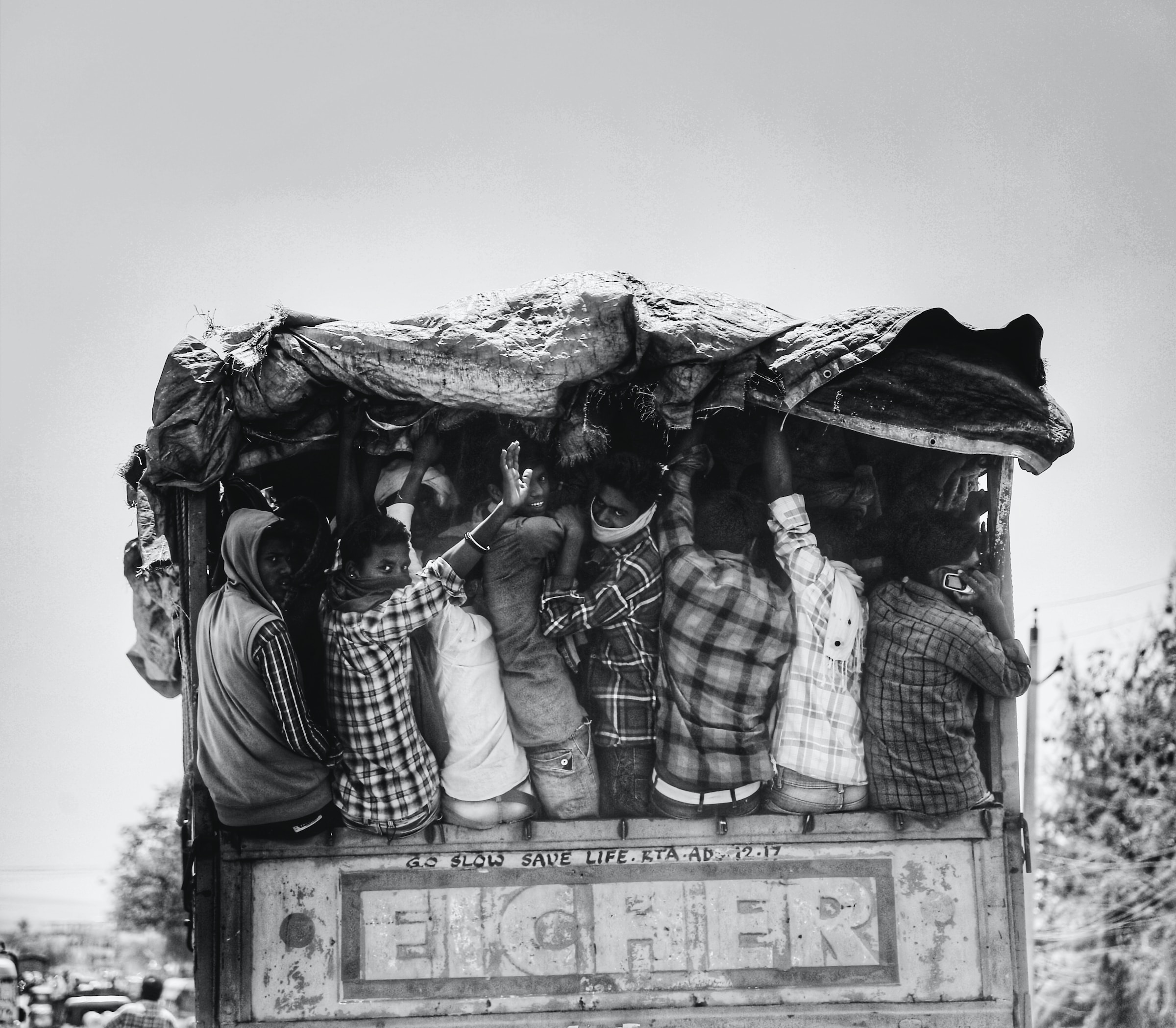Making migrants’ voices heard. December 18 is International Migrant Day.

The word “migration” conjures up a wide range of images, from visa stickers and worn passport pages to war-torn landscapes and refugee camps. For centuries, people have migrated. Sometimes, they move in search of something: work, education, or the promise of ‘a better life’. More often, they move to escape something: conflict, persecution and, increasingly, climate disaster. According to the UN Migration Agency (IOM), a migrant is “any person who is moving or has moved across an international border or within a State away from his/her habitual place of residence” – regardless of whether the movement was voluntary[1].
Migrants continually embark on dangerous journeys risking extortion, violence, and even death. News of their ill-treatment frequently makes headlines. This year alone, migrants all over the world faced refused landings[2], racist violence[3], indefinite detention[4], and other abuses. Every year, the UN marks International Migrants Day to promote safe migration governance, grounded in the respect of human rights.
War is a major driver of forced migration globally[5]. Such displacement severs the ties between a person and their home, alienating them from comfort and familiarity. Refugees face language barriers and financial struggles, compounded by the uncertainty of war. Those who stay face an altered version of their land, void of safety and security.
We usually calculate the costs of war in terms of deaths and injuries. However, in the context of Ukraine, the trauma of displacement is an important dimension of the conflict. The Russia-Ukraine conflict has been uniquely characterized by migration. The scale of the invasion and the bombardment of civilian infrastructure[6] has led to large-scale movements, both nationally and globally. Russia’s invasion of Ukraine sparked the largest refugee crisis of the 21st century.[7] Since February 2022, over 6 million Ukrainian refugees have been recorded globally. Additionally, an estimated 3.6 million people are internally displaced within Ukraine[8]. The forcible transfers of Ukrainian civilians into Russian territory have been widely documented. Adults removed in the context of ‘filtration’ procedures often face other human rights violations, including arbitrary detention, torture, and enforced disappearance[9]. Thousands of children have been transferred to ‘re-education’ camps designed to ‘integrate’ Ukrainian children into Russian society, frequently preparing them for foster care or adoption by Russian families[10].
“I never thought I would have to leave my home.”[11] – these words, spoken by a Ukrainian refugee two weeks into the war, represent the reality of migrants across the world. Those lucky enough to make it to safety face an impossible choice. Some look forward to a return in more stable conditions. Others move on, building new lives for their families. Whatever their fate, they deserve respect and compassion as they navigate the unsettling experience of forced migration.
Author: Anuja Jaiswal, International Peace Institute and Asia Justice Coalition
[1] https://www.un.org/en/global-issues/migration – some use the term ‘migrants’ to refer solely to those participating in voluntary movements, but for the purposes of the UN (and this piece), it is an umbrella term that encompasses both voluntary migrants and forcibly displaced persons.
[2] For example: Amnesty International, “Indonesia: Hundreds of Rohingya refugees at risk after refused landing”, November 18, 2023
[3] For example: Lisa Bryant, “Racist Attacks, Criticism of Tunisia’s President mount after Controversial Remarks”, VOA News, March 2, 2023
[4] This was standard practice in Australia until last month.
Paul Karp, “Indefinite immigration detention ruled unlawful in landmark Australian high court decision”, The Guardian, 8 November, 2023
[5] UNHCR, “Forced displacement continues to grow as conflicts escalate”, 25 October 2023
[6] Russia’s targeting of civilian infrastructure has been widely documented in several reports and articles, eg:
Human Rights Watch, Tanks on the Playground: Attacks on Schools and Military Use of Schools in Ukraine, November 9, 2023
[7] Jamey Keaten, “UN Refugee Agency: 1 million flee Ukraine in under a week”, AP News, March 3, 2022
[8] UNHCR, “Ukraine Situation: Flash Update #61”, 12 December, 2023
[9] The experience of Ukrainians transferred during or after ‘filtration’ processes has been documented by civil society and human rights organizations. E.g: Yale Conflict Observatory, Mapping the Filtration System in Donetsk Oblast, 25 August 2022
Oleksandra Matviichuk, Natalaia Arno, and Jasmine D. Cameron, “Russia’s Forcible Transfers: How Civil Society aids Accountability and Justice”, Just Security, March 3, 2023
[10] The forcible transfer of Ukrainian children into Russian territory is most widely documented in the following report: Yale Conflict Observatory, Russia’s Systematic Program for the Re-Education and Adoption of Ukraine’s Children, 14 February 2023
In August, delegates discussed the deportation and treatment of children taken by Russia at a Security Council Briefing. At the meeting, Kateryna Rashevska, legal expert at the Regional Center for Human Rights, reported that Russian Federation agents have taken at least 19,546 children to Russia from Ukraine since 18 February 2022.
[11] Valentina, quoted in: Chris Melzer, “Ukrainian Family confronts new reality of life as refugees”, UNHCR, 10 March, 2022. This is a common sentiment amongst refugees from various contexts.
Photo by Sujeeth Potla on Unsplash

